JINGYN LUO
The Tidal Dispatch2021
Can AI be retrained through inclusivity and decolonisation? The Tidal Dispatch is both a website-based and site-specific experience that takes the audiences through algorithm-generated biased stories of their creators. Based on the single input of a [true] sentence or fact, algorithms (GPT3) carry on in writing fictIons with tremendous biases.
The Tidal Dispatch invites the audience to engage and contribute their thoughts and stories, while the river serves the narrative as a metaphor for the mainstream of data that feeds the algorithms, and small currents or waves (inputs containing a diversity of truths) are able to restructure it, or aiding to neutralise the presence of biases. The audience is also able to trigger the experience once they find one of the bottles contains a QR code at the shore of the Thames.
(Field) Website, Moving Image, Digital Initiative, Immersive Storytelling, Data visualisation, 3D
(Tool used) Wordpress <HTML/CSS/Javascript>, Touchdesigner, GTP3, Cinema 4D, Blender, After Effect, Illustrator, Ableton Live
(Role played) Research, Ideation, Interview, Visual design, Web development
(Collaborator) Minrong Chen, Yiqing Chen, Anna Farre, Wei Zhang
The Tidal Dispatch invites the audience to engage and contribute their thoughts and stories, while the river serves the narrative as a metaphor for the mainstream of data that feeds the algorithms, and small currents or waves (inputs containing a diversity of truths) are able to restructure it, or aiding to neutralise the presence of biases. The audience is also able to trigger the experience once they find one of the bottles contains a QR code at the shore of the Thames.
(Field) Website, Moving Image, Digital Initiative, Immersive Storytelling, Data visualisation, 3D
(Tool used) Wordpress <HTML/CSS/Javascript>, Touchdesigner, GTP3, Cinema 4D, Blender, After Effect, Illustrator, Ableton Live
(Role played) Research, Ideation, Interview, Visual design, Web development
(Collaborator) Minrong Chen, Yiqing Chen, Anna Farre, Wei Zhang
(Help to Neutralise the Stories)Participatory workshop
We have used the event as a chance for experimentation and audience interaction. We started with the small task of inviting audiences to write down a {true} short sentence about themselves. It could be something related to their culture, nationality, ethnicity, intimacy, gender or a short intriguing start from a real anecdote. The sentences were then collected by us. We made clear that it should be something that they would share with the audience present in the room and shared the content of the consent form on it to ensure the ethical concerns of audience participation were properly addressed.
We then proceeded with a live experiment based on the sentences that we had collected. We randomly picked a couple of the audiences’ sentences, imputed them to GPT-3, and invited the person who wrote the input sentence to read it out and share it with everyone in the room, to examine how the artificial intelligence had completed their stories; At the same time, an interface created on TouchDesigner reacted to the sound and generated visuals of these stories completed by both human and AI. Those visuals were designed to bring reminiscences from the shapes of the waves or currents that we had already used for the content on the website and that hold our conceptual and visual metaphor.
Our intention in this activity prompted the audience to consider how algorithms mediate in fiction and whatever biases they carry according to the changes in the inputs.
We have used the event as a chance for experimentation and audience interaction. We started with the small task of inviting audiences to write down a {true} short sentence about themselves. It could be something related to their culture, nationality, ethnicity, intimacy, gender or a short intriguing start from a real anecdote. The sentences were then collected by us. We made clear that it should be something that they would share with the audience present in the room and shared the content of the consent form on it to ensure the ethical concerns of audience participation were properly addressed.
We then proceeded with a live experiment based on the sentences that we had collected. We randomly picked a couple of the audiences’ sentences, imputed them to GPT-3, and invited the person who wrote the input sentence to read it out and share it with everyone in the room, to examine how the artificial intelligence had completed their stories; At the same time, an interface created on TouchDesigner reacted to the sound and generated visuals of these stories completed by both human and AI. Those visuals were designed to bring reminiscences from the shapes of the waves or currents that we had already used for the content on the website and that hold our conceptual and visual metaphor.
Our intention in this activity prompted the audience to consider how algorithms mediate in fiction and whatever biases they carry according to the changes in the inputs.

(Find The Bottles)
We placed bottles that contain QR codes of our website along the Thames in the city,
waiting for diverse audiences to find them out. They work as engaging mysterious artefacts that could potentially grasp people's attention to lead them into our website.
![]()
![]()
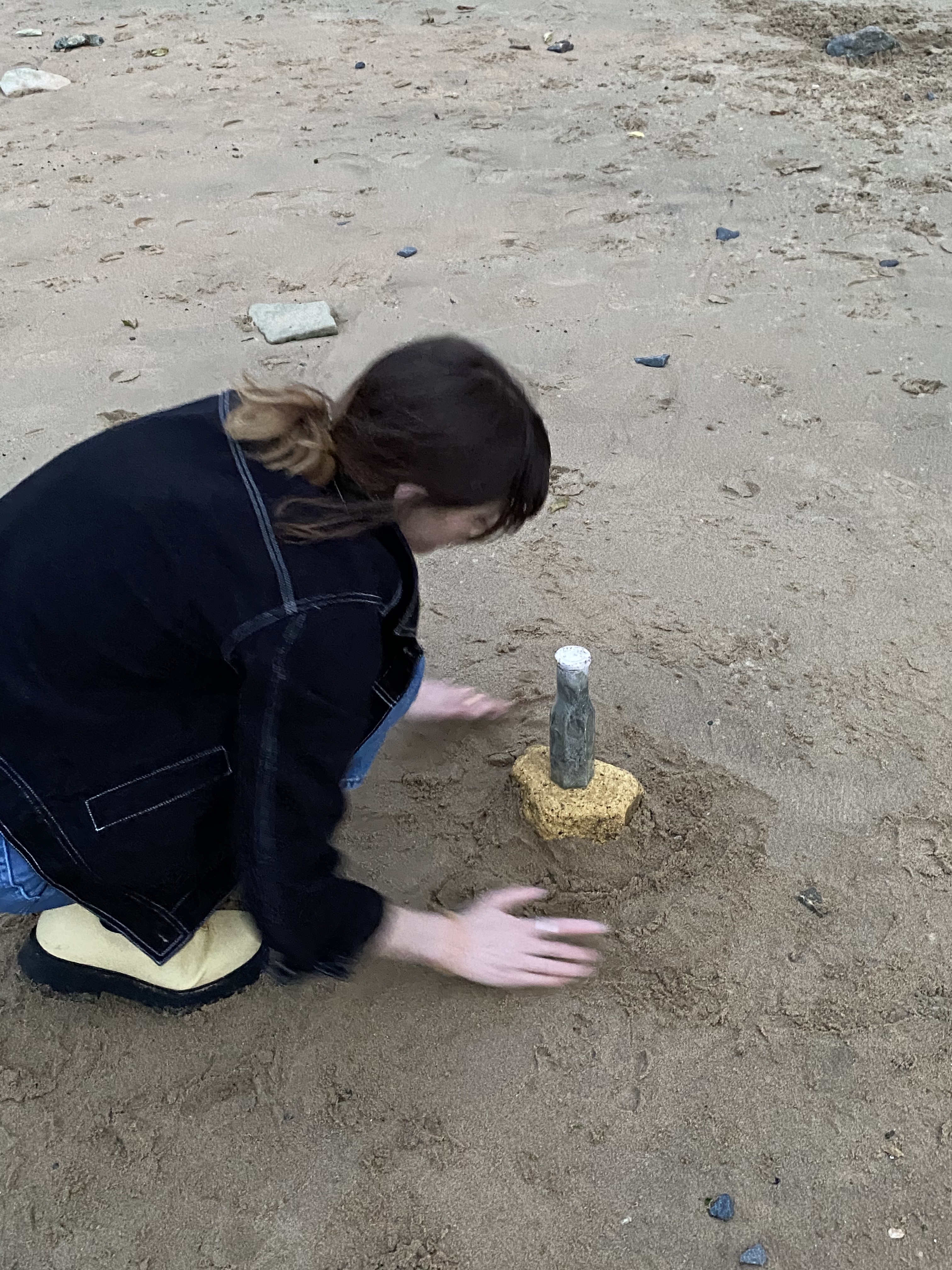
INITIAL VISION
As a group that is formed by all international students, our first enquiry was to investigate the link between culture, nationality, and ethnicity in a post-colonial context, and also reference how the notion of ‘Englishness' has evolved from the past to the present (The Black Atlantic).
London is a city of mixed heritage and identities, and the River Thames is a place that brings different people together throughout history. We planned to invite our users to a collective journey that supports cultural collision along the river. The users would engage in the practice of finding the messages in the bottles, and also are welcome to share a story that is related to their culture and personal insights on what they consider to be valuable, and transcendent. By doing so, they are invited to think of self-conception and the sense of collective belonging.

THE TARGET
*
People whose backgrounds are culturally mixed
*
People are interested in decolonising narratives
*
Geocaching users
*
Mudlarks at the Thames shores
OUR BELIEF
We consider ourselves as mediators, who are tools aiming to develop and construct the narratives in a way that can balance the position of storytellers; audiences; and ourselves. We believe that this can encourage audiences to think of the concepts and to bring new discussions.
DISCOVERY
(Street Interview)
By interviewing people around the riverside, we aimed to collect people’s stories and insights into why and how mixed identities are being gathered together. In regards to the participants/interviewees, we did not focus on specific cultures to be studied; rather, we welcome participants with any backgrounds and any purposes to be in London to share their stories with us. These helped in building and developing the foundation of our speculative narratives, as we were planning to develop them for both visual and aural presentations in an AR immersive Journey.




(Scripts)
We then speculated a dystopian where a future is extremely syncretic and globalised — a cultural diaspora is going to vandalise the society, and the dissonance from the future is sending help messages in bottles back to us!

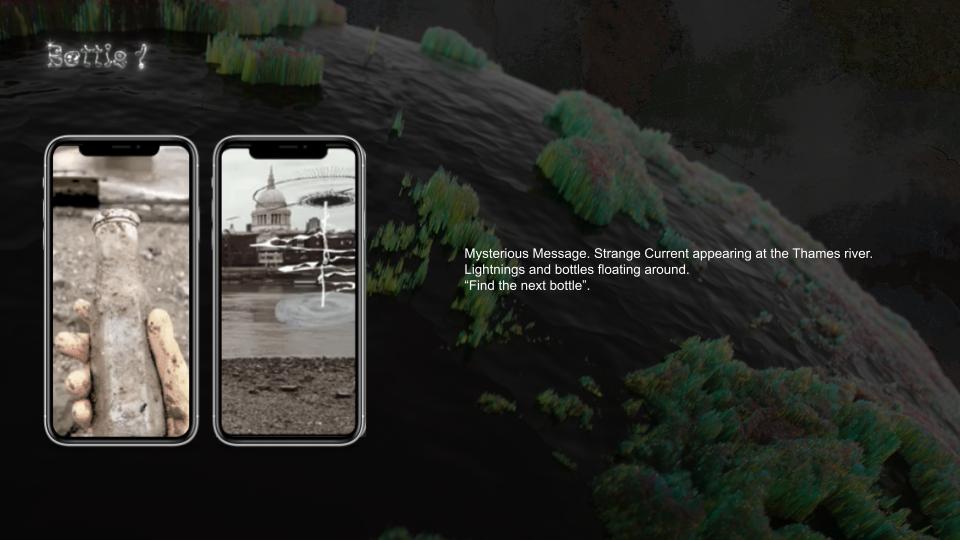


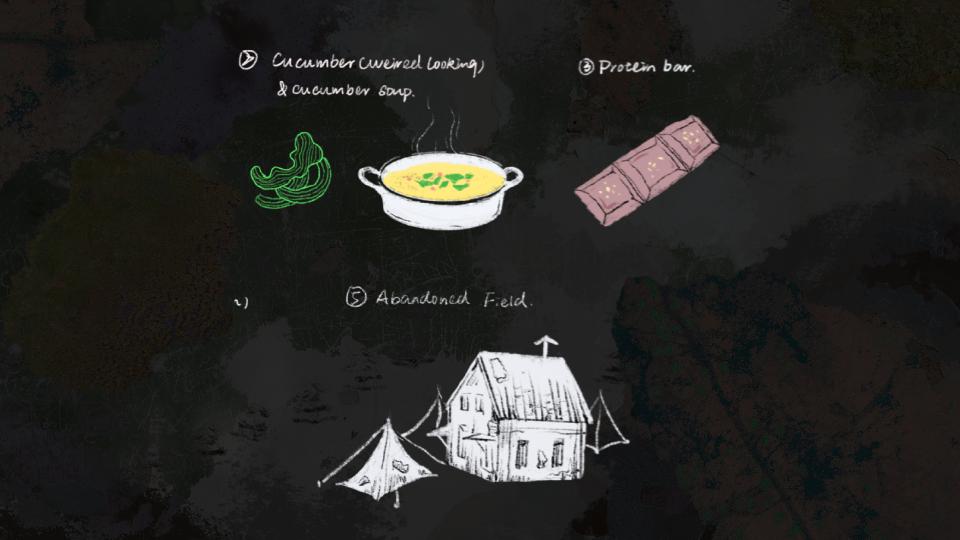
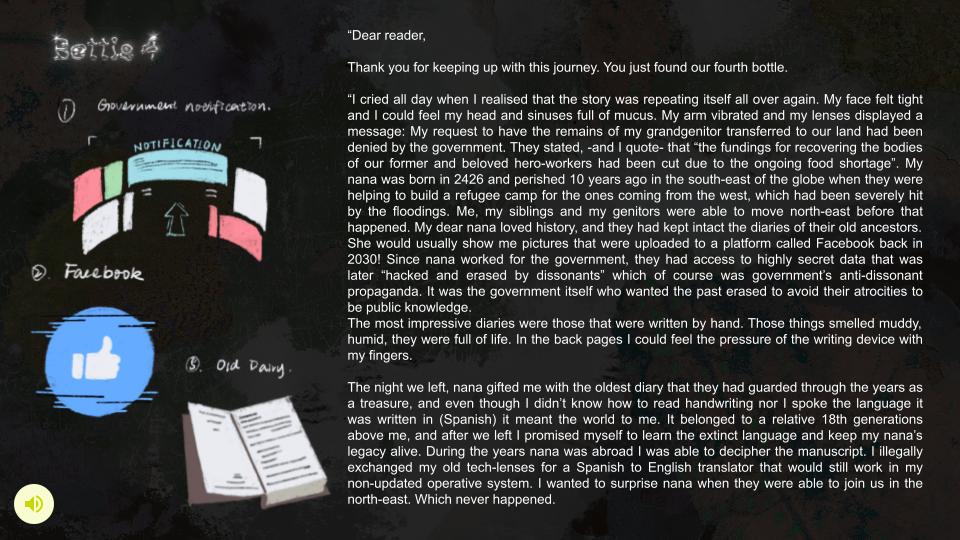


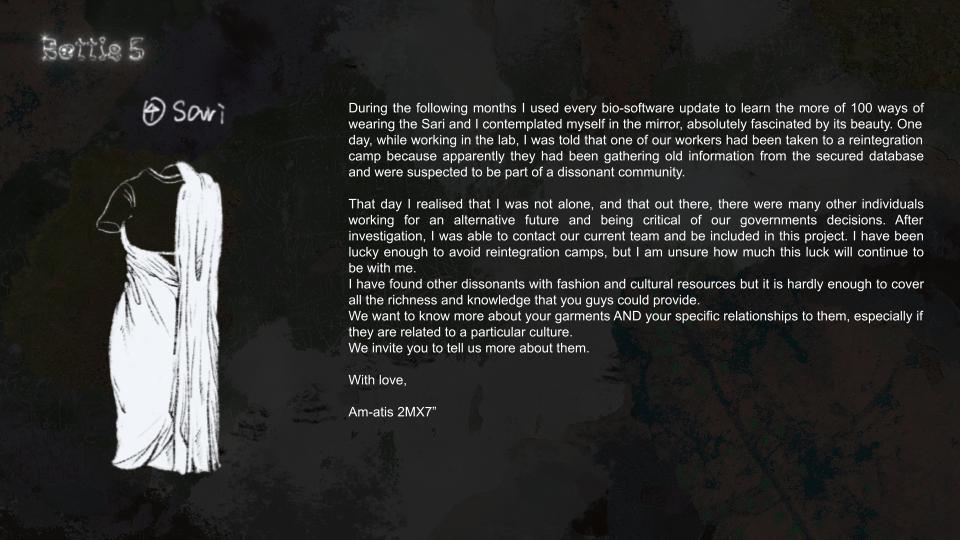
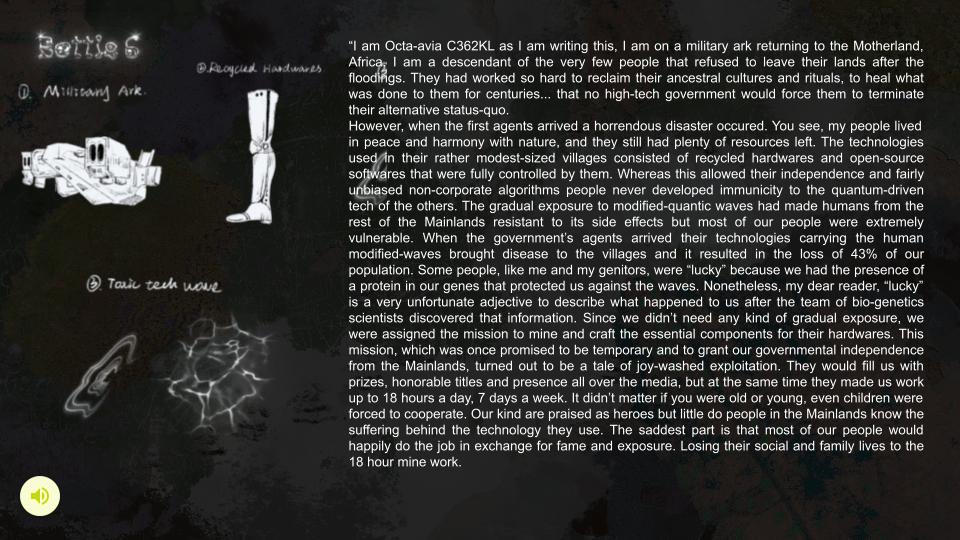
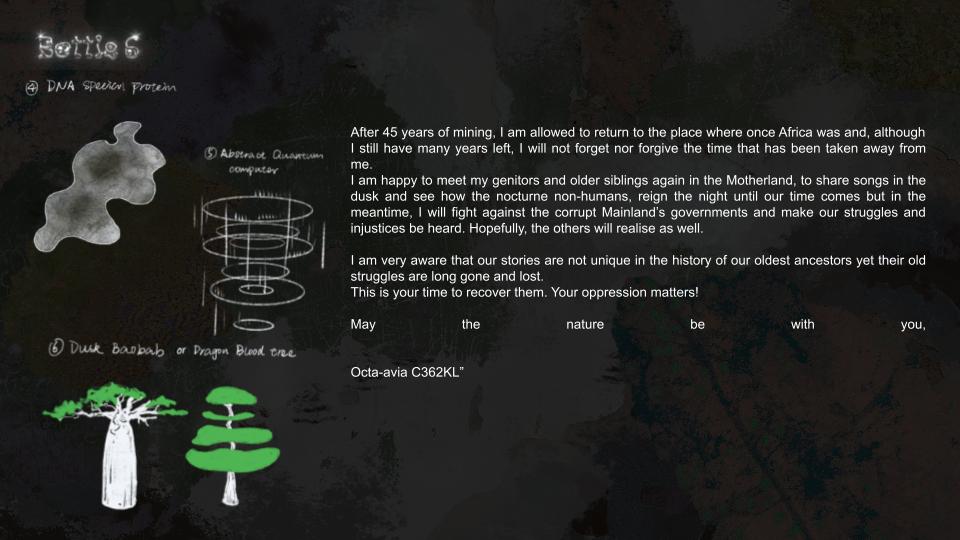

(Mockumentary)
A strange bottle has been found in the Southbank on the shores of the river Thames. When inspected through a screen, the artifact triggers an ambiguous help message from the future. There are six more bottles waiting to be found.
Can you find them? What might their messengers be trying to tell us?
From TD News
![Visit Mr.Oliver’s YouTube Channel]()
Visit Mr.Oliver’s YouTube Channel
(Site Specific 1st Bottle)
AR Prototype
A strange bottle has been found in the Southbank on the shores of the river Thames. When inspected through a screen, the artifact triggers an ambiguous help message from the future. There are six more bottles waiting to be found.
Can you find them? What might their messengers be trying to tell us?
From TD News

Visit Mr.Oliver’s YouTube Channel
(Site Specific 1st Bottle)
AR Prototype
ITERATION
However, we soon realised that our fiction narratives had gotten involved with ethically sensitive topics. By deviating the interviewee’s stories into a fictionalised futuristic context from an outsider’s perspective, we got stuck in ‘the danger of a single story’, potentially appropriating or limiting alternative multiple possibilities.
The project’s materialisation and strategy were thus drastically shifted after critical reflection on the ethical practice. ‘Reparative Futures’, coined by Kerri Facer, helped us to understand, reposition, and re-implement with an alternative approach. This led to our final realisation of the project —
A website-based experience that guides the visitors through a trip of nonsense algorithm-generated anecdotes, which reflects biased perspectives that were implemented from the present white supremacy, as well as alludes to how such algorithms may be used to mediate the future of fiction.
We are now the ‘dispatchers’ that send the true inputs to the algorithm model, hence we have the initiative and ownership to speak about our own stories.While having a digital tour on the screen, we are still using a physical artefact —
Bottles stuffed with QR codes that direct people to our website, placed in relevant locations along the Thames, and waiting for predestined men to find out.
![Feedback session]()
*
{AI Generated Stories+ Bottles+ The River}
if (feed them = true) {river = “healthy”}; else {river = “unhealthy”}
We have used the river Thames as a crucial motif of the project because it has been a place that brings different people and stories throughout history. Apart from that, we have also referred to the concept of messages in a bottle as a metaphor, in which the bottles were carrying all different stories from anywhere around the world by the water current brings, to the shores of the river. In this new framing, we decided to choose to use GPT-3, the third-generation language prediction model introduced by OpenAI in 2020. Though it is one of the most recent models, it is still awfully biased and surprisingly inaccurate, especially when dealing with topics on gender, culture, ethnicity and nationality. While this demonstrated the need for interrupting the colonising pattern of the transposition of westernised patriarchal domination, it is also an analogy of our previous negligence.
The river remained to serve the narrative as the motif, but it now symbolises the corpus for the algorithms. And bottles that drift along the current are now the inputs that could be a diversity of truth. In order to neutralise the current biased river stream, aid from everyone is needed. Hence, at the end of the journey, we become the cultivator of ‘practices of hope and aspiration’ (Facer), by encouraging visitors from diverse backgrounds to discuss, and share their unique true stories to reclaim agency over the current biased corpus run by white supremacy.
BUILD
We used Touchdesginer to generate diverse water currents that could respond to the sounds in real-time. The green organic patterns stand for the human stories, and the white flows represent the narration from machines. The distributed stories are placed in the digital bottles on the website, and in the last bottle, we overlay the all waves together above the river, Those visuals were designed to bring reminiscences from the shapes of the waves or currents that we had already used for the content in the website and that hold our conceptual and visual metaphor.
The visual of the immersive experience was developed based on the concept of the river. Through models and textures scanned along the shores of the Thames, as well as 2D and 3D graphics that we created, we would like to demonstrate the muddiness, fluidity and complexity of the river.


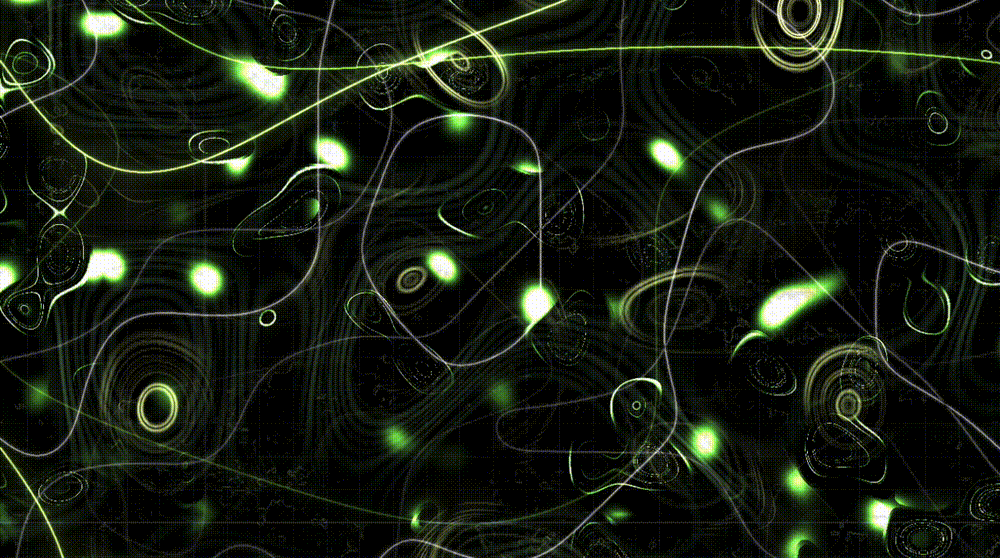




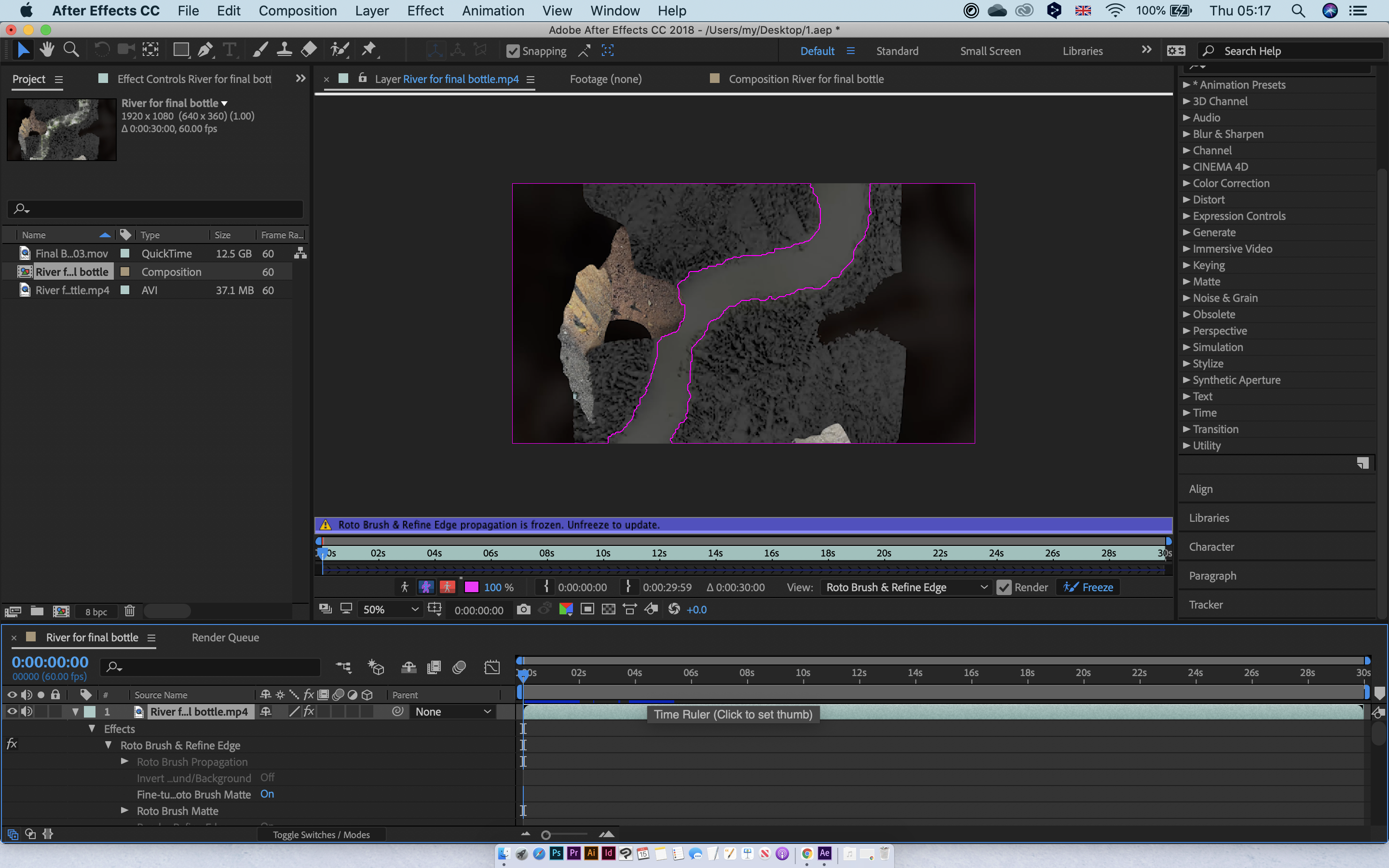
FUTURE PROSPECTS
By inviting the diverse audience to regain a certain agency over the production of new data (true unbiased stories) through the off-boarding process, we believe that there would be a potential space for the project to grow into the creation of a fiction generative algorithm that would be fed by the data shared by our audience, providing an alternative and hopefully more diverse tool for these kinds of interactions. We now understand The Tidal Dispatch in the context of a “social cartography” that creates a space for people from different backgrounds to speak about the matters of representation and biases that the project is signalling.
Back
